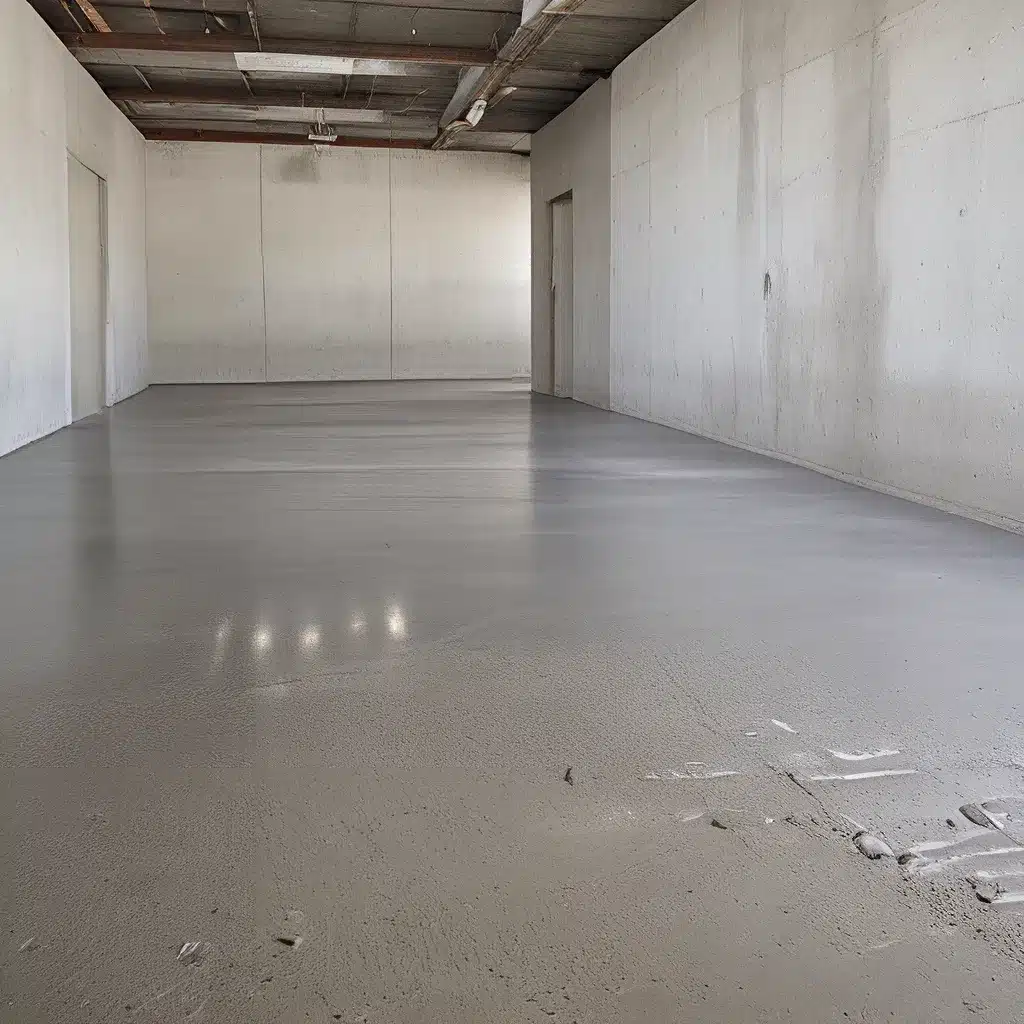
Ah, the world of concrete – where every surface tells a story. From the rough-hewn foundation of a skyscraper to the sleek, polished floors of a high-end boutique, this versatile material is the backbone of modern construction. But as any seasoned contractor will tell you, the true magic doesn’t happen until you’ve prepped that concrete surface to perfection.
Unveiling the Art of Surface Preparation
Picture this: you’ve been tasked with transforming a drab, utilitarian space into a work of art. Your client wants something truly breathtaking – a concrete canvas that will leave their guests awestruck. Where do you even begin? Well, my friends, the secret lies in the preparation.
As a self-proclaimed “concrete connoisseur” (with the calluses to prove it), I’ve learned that the key to successful renovations is all about getting that surface just right. It’s like baking a cake – if you don’t take the time to cream the butter and sift the flour, you’re never going to achieve that perfect, melt-in-your-mouth texture. The same principle applies to concrete.
Cleaning the Slate: Removing Impurities
Before you can even think about staining, sealing, or stamping that concrete, you’ve got to get down to the nitty-gritty and remove any unwanted elements. We’re talking dirt, debris, old coatings, and even that pesky efflorescence (those unsightly white salt deposits that love to creep up on you).
Now, I know what you’re thinking – “Can’t I just slap a coat of paint over it and call it a day?” Well, my friend, that’s a surefire way to end up with a hot mess on your hands. Trying to cover up impurities will only lead to adhesion issues, premature wear and tear, and a finished product that looks more like a kindergartener’s art project than a professional renovation.
Instead, you’ll want to roll up your sleeves and get to work. Depending on the severity of the issue, you might need to bust out the heavy-duty tools – think concrete grinders, shot blasters, and even acid etching solutions. Trelawny has some great resources on the different surface preparation methods and when to use them.
Smoothing the Rough Edges
Once you’ve stripped that surface clean, it’s time to start smoothing things out. After all, you can’t expect a sleek, professional finish if you’ve got a pockmarked, uneven canvas to work with. This is where your concrete grinding and polishing skills come into play.
Personally, I’m a big fan of the concrete shot blasting method. Not only does it leave you with a beautifully textured surface, but it also helps to open up the pores of the concrete, allowing your stain or sealer to really sink in and create that stunning, long-lasting finish.
Of course, there are plenty of other techniques out there, each with their own unique advantages. The key is to really understand the specific needs of your project and choose the right tools for the job. Maybe you need to grind down some high spots, or perhaps you’re dealing with a severely uneven surface and need to bring in the big guns (hello, concrete scarifiers!).
The Importance of Timing
Now, I know what you’re thinking – all this prep work sounds like a real time-suck. And you know what? You’re not wrong. Proper surface preparation can be a painstaking process, but trust me, it’s worth it in the long run.
Think about it this way: would you ever try to paint a wall without first giving it a good cleaning and sanding? Of course not! The same principle applies to concrete. If you try to skip the prep work and jump straight to the fun stuff (like staining or sealing), you’re only setting yourself up for disappointment.
You see, concrete is a lot like a diva – it demands your full attention and won’t settle for anything less than perfection. So, be prepared to put in the time and effort to get that surface just right. And when it comes to drying times, patience is key. Rushing through the process will only lead to subpar results and a whole lot of headaches down the line.
Putting it All Together
So, there you have it, folks – the secret to successful concrete renovations. It’s all about that meticulous surface preparation. From stripping away the old to smoothing out the rough edges, every step is crucial in creating a finished product that will leave your clients (and their guests) absolutely awestruck.
And let’s not forget the importance of incorporating the right tools and techniques for the job. Whether you’re dealing with a stubborn coat of paint or a severely uneven surface, there’s a solution out there waiting to be discovered.
Remember, when it comes to concrete, the devil is in the details. So, roll up those sleeves, crank up the tunes, and get to work. Because trust me, the end result will be well worth the effort.
Now, if you’ll excuse me, I’ve got a little concrete polishing to do. After all, Concreté Townsville doesn’t run itself! Happy renovating, my friends.

